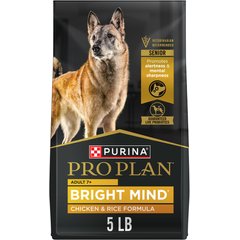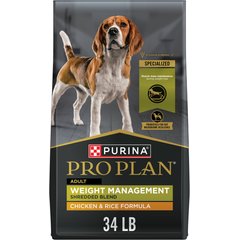Can Dogs Eat Papaya?
NOTE: Always check with your veterinarian first before giving your dog any new foods, especially “people foods.” What might be OK for one dog might not be good for your dog, depending on multiple factors, such as their age, health history, health conditions, and diet. Dogs on prescription diets should not be fed any food or treats outside the diet.
Papaya is a tropical fruit packed with vitamins and minerals. If you’re lucky enough to live in a place where papaya grows naturally, these orange-colored fruits are a popular snack that can be eaten plain or found in smoothies, salads, or desserts. It’s so yummy, that you shouldn’t be surprised if your pup begs for a bite.
But can dogs eat papaya, or should you find another fruit to share? Let's find out.
Is Papaya Good for Dogs?
Papaya is safe for dogs to eat. In fact, it’s even a healthy treat for dogs when fed in moderation.
There are several nutritional benefits of papaya that apply to dogs as well as humans. Like many other fruits, papaya is rich in vitamins A and C, as well as potassium and fiber. These nutrients can help support your dog’s immune system and promote healthy digestion. Papaya also contains an enzyme called papain that’s known for anti-inflammatory properties, which could be beneficial for dogs with joint pain or arthritis.
But don’t go adding a heaping helping of papaya to your dog’s dish right away. Like most other “human foods,” papaya is only safe for dogs to eat in small amounts. Too much will make him sick, as the high fiber content can cause digestive issues. You’ll also want to make sure the papaya is ripe and given without the seeds and skin.
Vet Recommended Dog Food
- Eukanuba Premium Performance Puppy Pro Dry Dog Food, 4-lb bag$25.99Chewy Price
- Purina Pro Plan Bright Mind Adult 7+ Chicken & Rice Formula Dry Dog Food, 5-lb bag$19.74Chewy Price
- Purina Pro Plan Adult Weight Management Shredded Blend Chicken & Rice Formula Dry Dog Food, 34-lb bag$71.98Chewy Price
- Hill's Science Diet Adult Lamb Meal & Brown Rice Recipe Dry Dog Food, 33-lb bag$83.99Chewy Price
How to Safely Prepare Papaya for Dogs
Want to share a little papaya with your pooch? Here are some tips for properly preparing the fruit for your dog so it's safe for them to eat:
-
Remove the skin and seeds from the ripe papaya before feeding it to your dog. These are difficult for your pup to digest and will cause an upset stomach.
-
Cut the fruit into small pieces to reduce the risk of choking.
-
Start slow! Try feeding your dog one or two bites as an occasional treat to start off—not as a major addition to their diet.
-
Monitor your dog closely for any issues. This fruit is full of fiber, so it could cause your pet to have loose stools, even if they only have a little (or if your dog has a sensitive stomach).
As with any new food, talk to your vet before offering papaya to your pooch, especially if he has any food allergies or other health conditions.
How Much Papaya Can Dogs Eat?
Try giving your dog a small bite of papaya at first. Even if they love that first fruity taste, go slow. As with any fiber-rich, sugary fruit, too much could cause an upset stomach or diarrhea. A few small bites should be OK as an occasional treat, but you should still watch for signs of digestive upset and avoid it if it makes your pup sick.
Here are some general portion guidelines to follow if you’re introducing papaya to a healthy, adult dog:
-
Extra-small dog (20 pounds) = one or two small pieces (or less than a teaspoon)
-
Examples: Yorkies, Chihuahuas, Pomeranians, Pugs
-
-
Small dog (21–30 pounds) = three to four small pieces (about a teaspoon)
-
Medium dog (31–50 pounds) = five to six small pieces (about 2–1 tablespoon)
-
Examples: Basset Hounds, Border Collies, Australian Cattle Dogs
-
-
Large dog (51–90 pounds) = seven to eight small pieces (about 2 tablespoons)
-
Examples: Pit Bulls, German Shepherds, Labrador Retrievers, Australian Shepherds
-
-
Extra-large dog (91+ pounds) = 10 small pieces or less (no more than a ¼ cup)
-
Examples: Newfoundlands, Bernese Mountain Dogs, St. Bernards, Great Pyrenees
-
Even though peeled, diced papaya fed in small portions should be OK for most dogs, it’s always best to check with your vet before introducing a new ingredient to their diet. Your vet can make specific recommendations for your four-legged friend based on their breed, age, weight, and any other health conditions.
What Other Fruits Can Dogs Eat?
Generally speaking, the following fruits are safe for dogs to eat:
Remember: Not all fruit is safe for dogs to eat. Some fruits, such as grapes, should be avoided because they are toxic to dogs.
Featured Image: iStock/Solovyova




